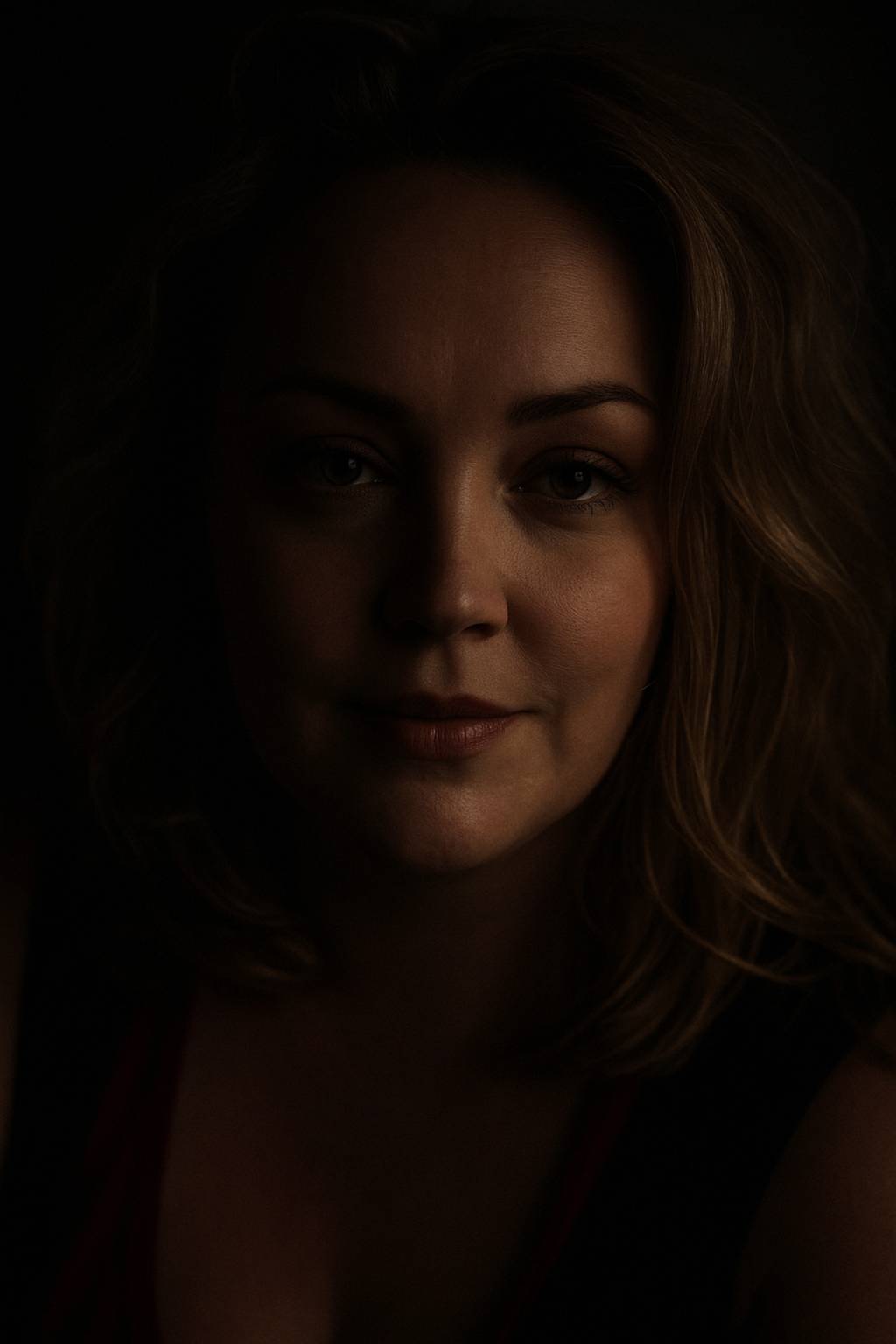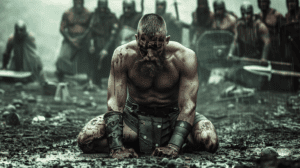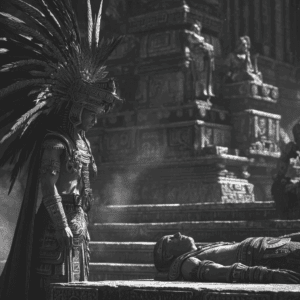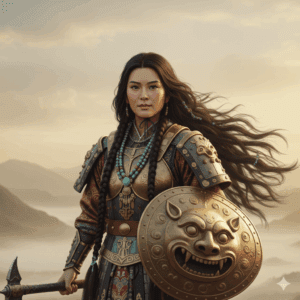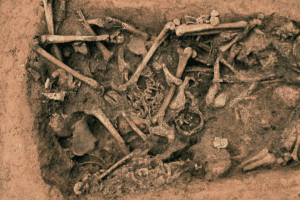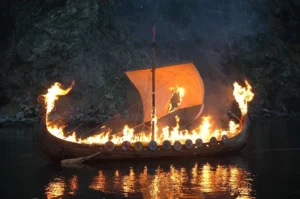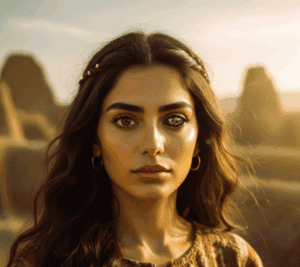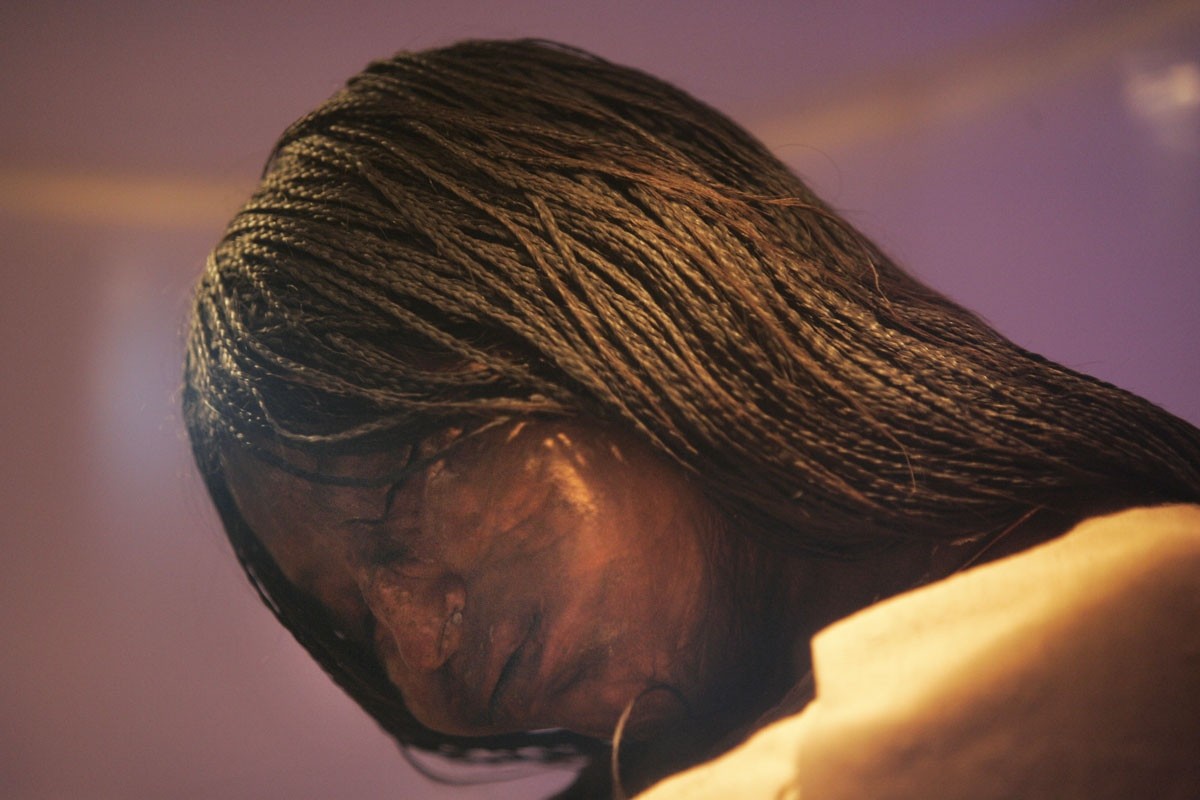
At 22,000 feet above sea level, Llullaillaco on the border of Chile and Argentina is a place of silence. The mountain claws at the sky ominously, its slopes stripped bare, its nights colder than –20°C. Nothing human should survive there. Yet buried in its frozen skin, three children from around 1500AD were found sitting as if waiting for the very day they would be discovered — at last. Yet they did not know it would be 500 years later, not by their parents, whom they could have cried out for, but rather by strangers whom they’d never met. In a world they’d never seen.
These were not ordinary children. They were the offspring of elite Inca families, chosen for their beauty, their purity, their “perfection.” It was said to be an honour beyond all honours. Yet in that honour lay horror. Once happy and cherished, the children must have felt the sharpest betrayal. The very hands that had fed them, dressed them, soothed their cries, were the same hands that led them to the mountain of their horrifying death.
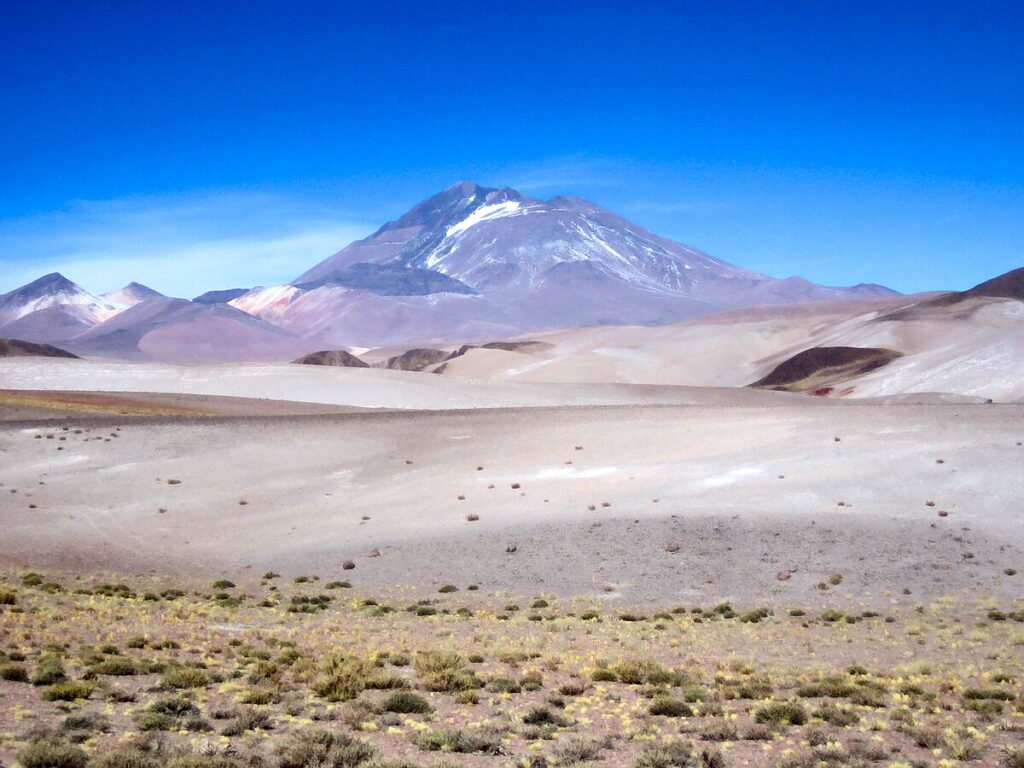
The Maiden
The eldest, a fifteen-year-old girl now known as La Doncella, sits hunched forward as though sulking like any teenager today. But her posture hides something darker. When her body was examined, scientists found staggering levels of alcohol and coca coursing through her blood. Coca leaves — chewed daily by the Inca for energy and ritual — release alkaloids that numb hunger, dull pain, and sharpen the senses. Here, it was used to sedate. Alcohol, in the form of chicha (a potent corn beer), was poured into her until her mind was fogged, her senses dulled.
She would not have known where she was. A small mercy, perhaps.
But mercy is a double-edged blade. Once abandoned in the cold, did those same drugs betray her? Did they strip away the will to fight, the chance to curl tighter against the frost, the instinct to call out for her mother’s arms? Her last awareness may have been blurred memories of the day, and the alcohol’s false warmth would have begun seeping from her core as the wind whipped her face and hair.
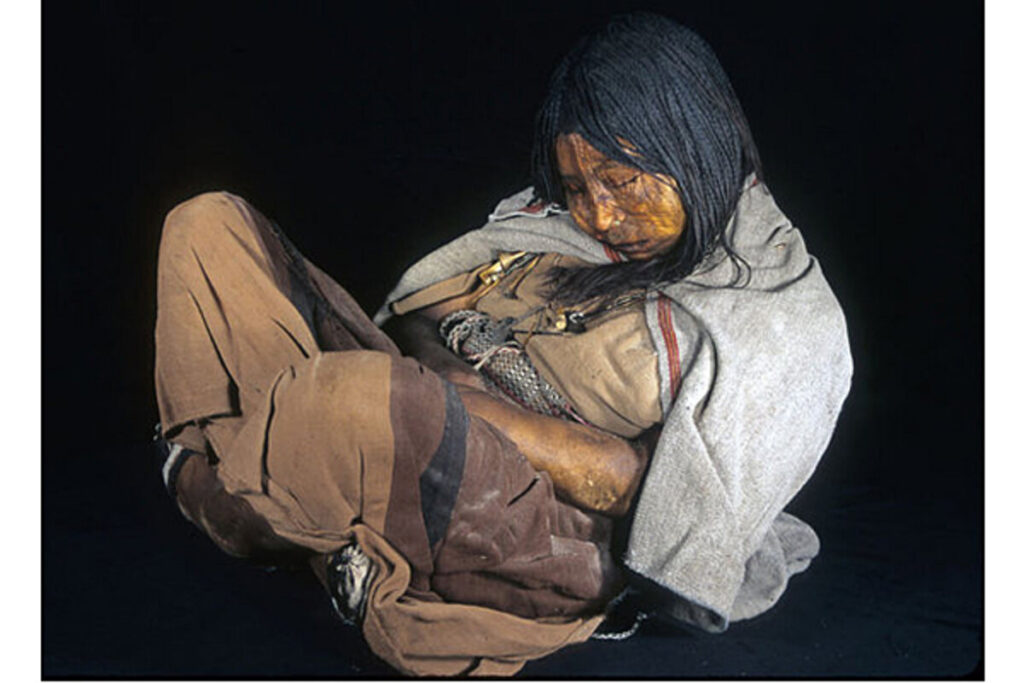
The Younger Ones
The other two were younger — a boy of seven and a girl of six. The boy sits cross-legged, his face serene, wrapped in the ritual cloth of the elite. The youngest girl rests as though only napping, but her small body tells of violence: a bloodied cloth lay by her, and she had injuries consistent with being struck. However, it became clear during the excavation that she had been struck by lightning, causing the injuries now preserved for eternity.
They were children of privilege, paraded through their villages, celebrated, fattened on rich foods until their cheeks glowed. They must have felt chosen in the way only children can — expecting a reward, a future, a promise. What they received was betrayal so profound that even their innocent minds could not have grasped it until it was too late.
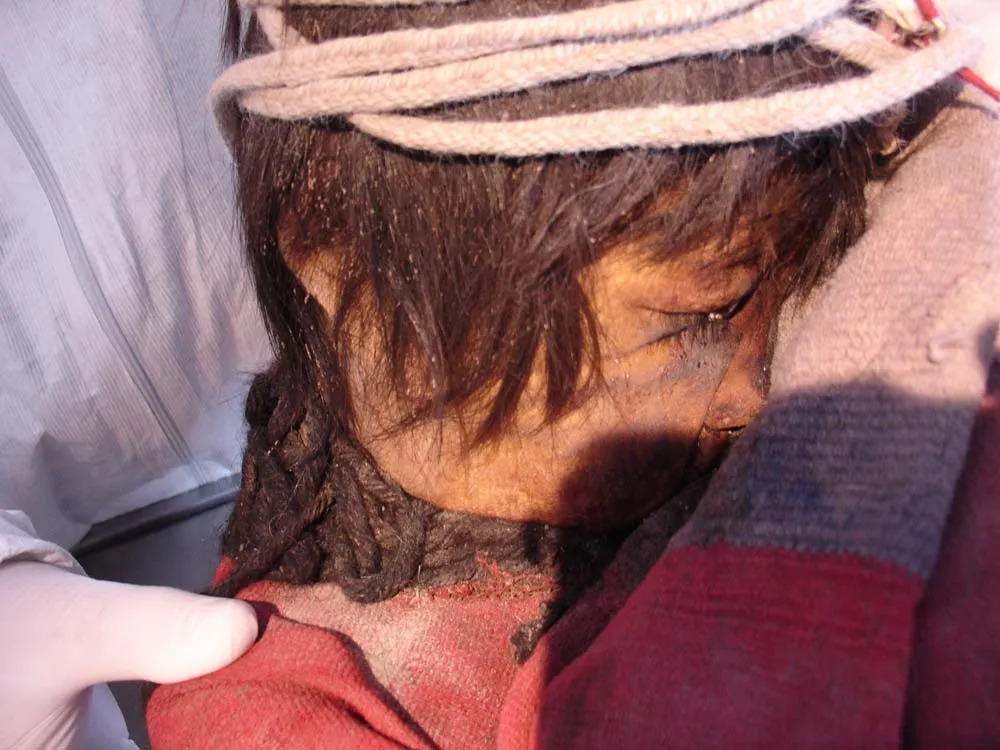
The Parents
How did the parents feel as they took the long, cold journey along the mountain face, the last trip with their children? These were elite families — their grief tangled with pride. To offer a child in the Capacocha ritual was the greatest sacrifice one could make, believed to secure fertility for crops, stability for the empire, and favour from the gods: Inti the Sun God, Viracocha the Creator, Pachamama the Earth Mother, and the mountain spirits themselves.
The day must have had a mix of delight and horror as they set about drugging the children to aid them in their grim fate. Did they whisper reassurances, promising that the gods were waiting with open arms? That they need not be afraid? Or, did they choke back sobs as they pressed coca leaves to their children’s lips, urging them to chew, to swallow, to drift away from reality?
We can only wonder: when it was over, and they returned down the mountain with empty hands, did their grief ever heal? Or did they feel pride, even elation, that they had given something so “special” to the Gods? Perhaps they lived the rest of their lives convinced they had secured divine favour, that the sun itself shone warmer for their loss. Or perhaps every time the wind howled through their village, they heard the cries of children they would never see again.
Waiting
Three children were led up the mountain and told to sit and wait. That much is clear from forensic evidence: they were seated upright, obedient, as if doing as they were told. Did they know what they were waiting for?
The boy, only seven, was cross-legged and small against the vast emptiness. The little girl, six, her lashes soon to frost over, appears hauntingly sweet and innocent, her face almost lifted to the sun — preserved as though this had happened a week ago. The Maiden, around fifteen, drugged into a haze, her head bowing lower with every breath.
Perhaps they thought their parents would return. Perhaps they thought this was only a test. But night fell, and the winds screamed, and the truth became clear: no one was coming back. Their waiting was the ritual.
Nightfall
Picture it: night falling on Llullaillaco. A barren world of snow and stone. The sun is gone, the sky a black wound studded with stars. The children sit alone, the drugs heavy in their blood, their breath turning into knives of frost. The only sound is the tearing wind — no voices, no warmth, no comfort. They would have no doubt tried to comfort each other until they could no longer talk.
The little boy curls into himself. The youngest girl, her lashes frosted, whimpers until her voice disappears into the night. The Maiden sways under her sedation, her head bowing lower, the cold gnawing until she can no longer feel her body.
And there is no rescue. No one is coming back for them.
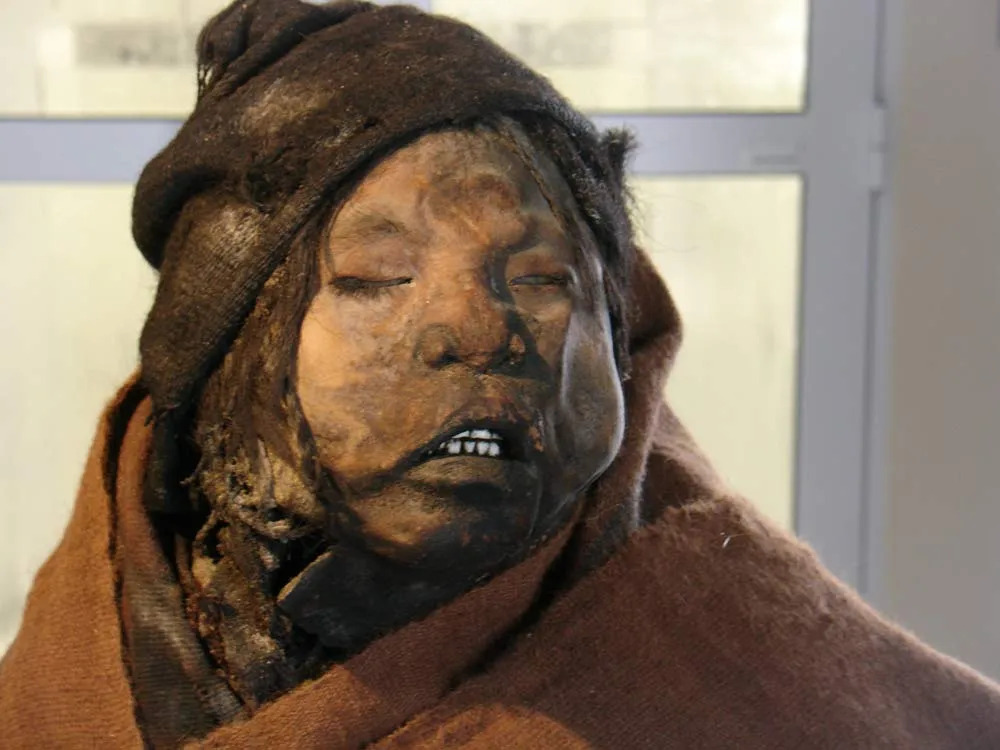
The Death
Freezing to death is slow. First comes the shivering, violent and unstoppable. Then the body numbs, and with numbness comes confusion. The cold blood starves the brain, and hallucinations flicker across the mind like cruel gifts. Some believe hypothermia can feel like warmth in its final stage — a trick of the body, convincing its victim to strip away clothing, to sink into snow, to welcome the end as though it were sleep.
Perhaps, in their last moments, the children no longer saw the barren mountain. Perhaps their minds built an adventure, turning the tearing winds into music, the black sky into a tunnel of light. Maybe their final breaths came with smiles, convinced they were going home. In that, the mind gave them one last protection.
The Preservation
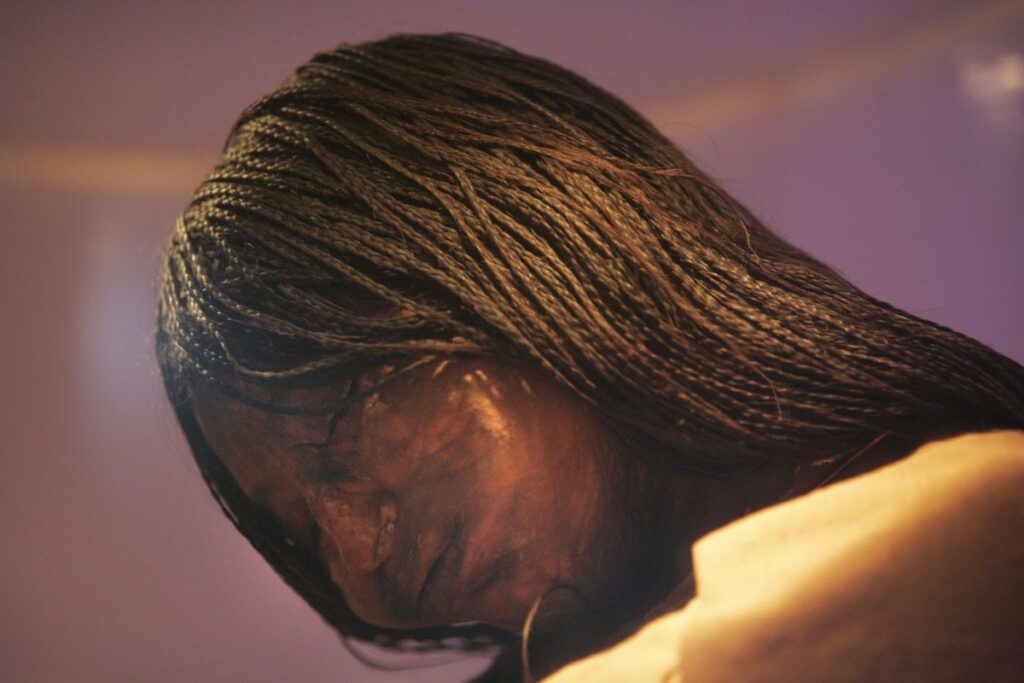
The mountain preserved them too perfectly. When archaeologists uncovered them in 1999, they did not find skeletal remains but children who looked as though they had died yesterday. The Maiden’s hair was still braided, her lips closed tightly as though sulking. The boy’s small face was unmarked by decay. The youngest girl’s lashes were still dusted with frost. Alongside them were offerings: figurines, fine textiles, small pots of food — gifts for their journey to the gods.
Visitors who gaze at them today often recoil, because the horror lies not in what is rotted, but in what is untouched. They do not look dead. They look asleep. Too asleep. And the silence around them feels wrong, as though the glass might shatter and they might stir.
But these are remarkable mummies, and the extent to which they were remarkable was only discovered after they were studied in detail. From individual hairs on their arms being preserved, to frozen blood in the heart of the young boy. Organs were preserved as the body froze before dehydration was able to set in. You can see their hair, teeth, and their skin.
The Legacy
The Inca believed they had done something positive. By giving their children to the Gods, they believed they secured fertility for their crops, blessings for their people, harmony with the sun, the earth, and the mountain spirits. The parents may have walked down from Llullaillaco empty-handed, but they would be convinced their sacrifice was glorious.
The Inca had faith that the children would go to the afterlife and bring abundance to the living. They saw the children as having the ability to act as mediators between the Inca Gods and the living. That was why the children had to be pure. To them, purity was a powerful tool for communicating with the most important Gods.
Also, children represented life continuing, so in the case of performing the ritual due to a famine it was believed the child being sacrificed would end the famine. In essence, life for the living could continue rather than being starved.
Yet, here is where things get even stranger. In Inca belief, the children did not die. They were not killed and simply forgotten about. Instead, they stayed on top of the mountain and watched over everything. The Inca even knew the frozen conditions at the top of the mountain would kind of preserve the body. Preserving them gave them added strength when dealing with the Gods.
But five hundred years later, what we see is horror. We see children drugged, silenced, and abandoned in the cold. We see innocence shattered by belief, trust turned to betrayal, love warped into obedience.
And in the faces of those children, we see ourselves. Each face, and expression perfectly preserved. Each eyelash intact, every hair on their head still there as it was 500 years ago.
Would you have been the parent, leading your child up the mountain with tears on your cheeks, whispering that it was for the gods? Or would you have been the child, confused, stumbling, too drugged to fight, staring up at the stars as the cold took your last breath?
The horror of Llullaillaco. Not gore. Not monsters. But parents turned into executioners, and children who were betrayed by the love they trusted most. The love of a parent.
Their final hours might have been more comfortable than we dare to imagine. The calming warmth of the mind, the warm coca doing its job perfectly, and the fact that they were together and not completely alone bring comfort to any person who cares about another. Especially a child.
The mountain bore testimony to their terror and slow death, but at least centuries later, they were taken away from their fate and given the empathy they deserved, finally.
